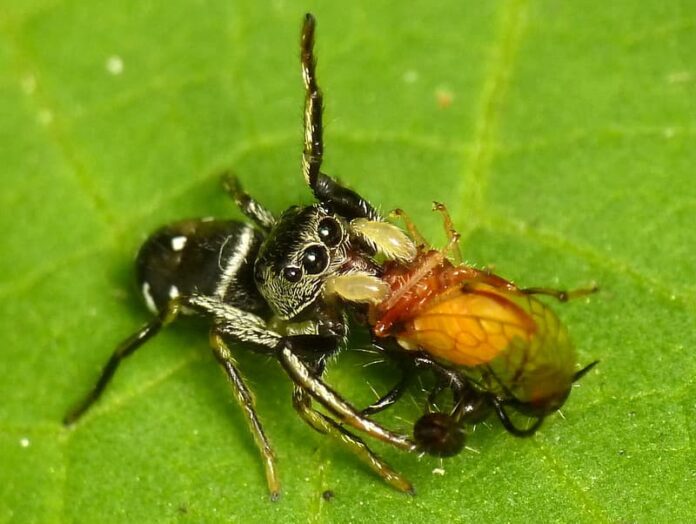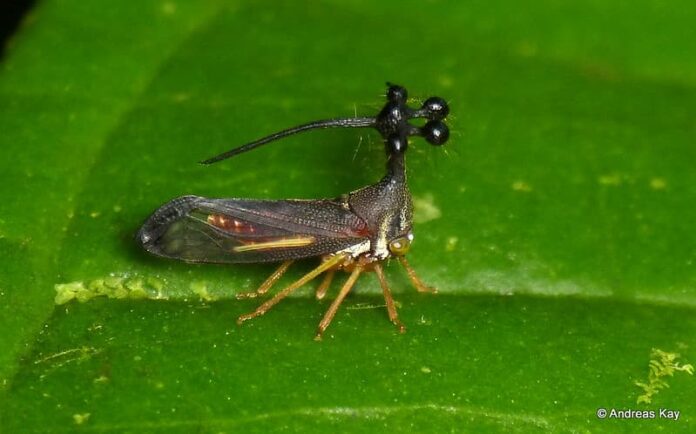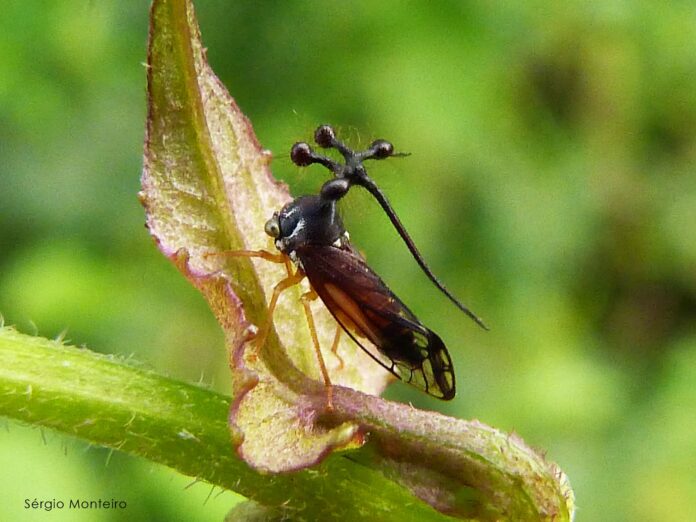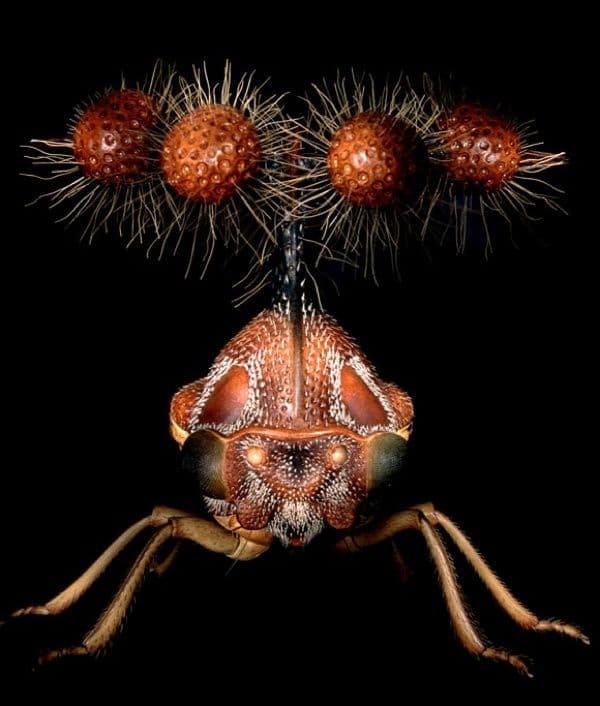Brazilian treehopper is one of the weird-looking creatures not everyone knows about. And that is my job to show you this kind of animal to refresh your day with something new like that. Just when you think aliens from cartoons and movies have the strangest looks, our mother nature proves otherwise. There are actually many interesting things about this tiny insect here, and you will find them out below. Let’s take a look, and don’t forget to share your thoughts.
1Appearance

With colors ranging from blue to bronze and green with spots or stripes, this one is quite pretty. The Brazilian treehopper is a pea-size insect with an impressive headpiece known as an appendage. These appendages come out from the insect’s thorax, and this antenna-like structure resembles eyes whose purposes scientists are yet to find. Both male and female Brazilian treehoppers have these two sets of balls, so attracting a mate is out of the question. The most recent theory of the headpiece is to mimic the parasitic fungus that invades the ant bodies. By looking like a zombie insect, it will have a higher chance of survival in the wild. Some explain that the headpiece also makes it difficult for predators to grab or eat them. The interesting thing about it is that the headpiece resembles bird droppings, leaves, or thorns in 3,400 Brazilian treehopper species.
2Behavior

Trees play very important roles in the life cycle of Brazilian treehoppers. They do not only feed there but also lay their eggs there, so they need trees to survive. A female Brazilian treehopper either lays her eggs by inserting them into the plant tissue or on the plant surface. One female Brazilian treehopper can lay up to around 60 eggs at a time. In some species, the mother guards her eggs from predators like wasps until they hatch while other leaves them. The cool part is that female Brazilian treehoppers also exchange mutual interests with ants. The ants will help the mother to protect the eggs while the mother produces honey-dew for them.
In the wild, these insects communicate by using vibrations through body shaking. Each species has a different vibration pattern that goes through the branch and transmits as far as a meter. They use this form to communicate with other members of the same species or with ants when they look for protection. At the same time, the mother also communicates with her kids and vice versa via this vibration as well. When in danger, multiple nymphs might shake and turn the vibration of aggregation that functions as the call for help. This is how the mother knows that her kids are in danger and goes to help them. A mother would wave her front limbs at or kick at an attacker with her hind legs at the intruders.
3Feeding & Habitat

As nymphs, Brazilian treehoppers feed on the underside of leaves so that they are safe from predators out there. The nymphs get nutrients from the sap of the leaves, hence the nickname “sap-sucking insects”. After it grows up, the Brazilian treehoppers also feed on leaves but they venture solitarily into the treetops. Since they tend to stay near the tops of the tree where there is plenty of food, they don’t move around much. Thanks to the sucking mouthparts, these treehoppers are able to penetrate a tree’s bark to eat the sap as well. At the same time, its saliva prevents a tree from closing up the bite area so that the feeding can go on.
Brazilian treehoppers are found throughout the world, but they are most common in Africa, Asia, Australia, North America, and South America. Among 3,400 species, only 3 of them have been sighted in Europe. Since they hang out high on the tree canopy, looking for one can be very challenging. These insects prefer to live in tropical regions where the climate and temperature are warmer. In case you wonder, the Brazilian treehoppers can fly normally in their habitats since their headpiece is hollow and light.
4Pest

Some treehopper species are actually pests that are capable of transmitting diseases to trees. If they feed on a plant that has a disease and then go feed on another, they transmit the disease. In some areas, treehoppers also damage many crops and horticultural plants like avocados, blackberries, citrus, maples, and willows. Sometimes a mother makes a gash in a tree bark to prevent predators from seeing her eggs. Doing so can also injure trees or shrubs because fungi and other plant diseases may enter through those gashes.
Related Post: Things You Don’t Know About Mad Hatterpillar




